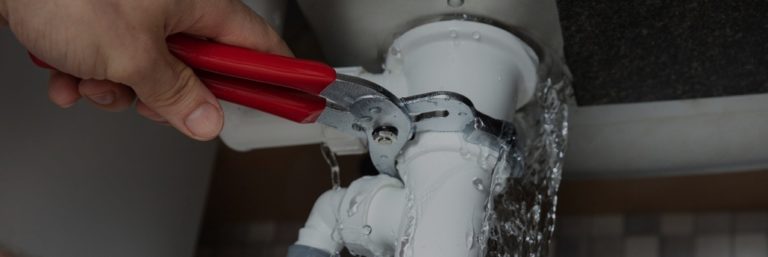We've unearthed this article involving Leaking water lines listed below on the web and felt it made perfect sense to discuss it with you on this page.

Early discovery of leaking water lines can mitigate a potential disaster. Some small water leaks might not be visible.
1. Take A Look At the Water Meter
Every house has a water meter. Examining it is a surefire manner in which helps you find leaks. For starters, switch off all the water resources. Guarantee no person will purge, use the faucet, shower, run the cleaning device or dish washer. From there, go to the meter as well as watch if it will certainly change. Considering that no person is utilizing it, there should be no motions. That shows a fast-moving leak if it moves. If you identify no adjustments, wait an hour or 2 and also check back once again. This indicates you might have a slow leak that might also be below ground.
2. Check Water Consumption
Evaluate your water expenses as well as track your water consumption. As the one paying it, you ought to observe if there are any kind of disparities. If you detect sudden changes, despite your consumption being the same, it implies that you have leaks in your plumbing system. Keep in mind, your water expense must drop under the exact same variety each month. An abrupt spike in your bill shows a fast-moving leak.
Meanwhile, a stable increase monthly, even with the same habits, shows you have a slow-moving leakage that's likewise slowly escalating. Call a plumber to completely inspect your residential property, specifically if you really feel a warm location on your flooring with piping underneath.
3. Do a Food Coloring Test
When it comes to water intake, 30% comes from toilets. Test to see if they are running properly. Decline specks of food color in the container as well as wait 10 mins. There's a leakage between the tank as well as bowl if the shade somehow infiltrates your bowl throughout that time without flushing.
4. Asses Exterior Lines
Do not forget to inspect your outside water lines also. Ought to water leak out of the link, you have a loose rubber gasket. One small leakage can squander bunches of water and surge your water costs.
5. Inspect and Examine the Scenario
Homeowners ought to make it a routine to examine under the sink counters and also inside closets for any bad odor or mold growth. These two warnings show a leakage so punctual attention is required. Doing routine evaluations, also bi-annually, can conserve you from a significant issue.
Inspect for discolorations and compromising as many home appliances and pipelines have a life span. If you think leaking water lines in your plumbing system, do not wait for it to rise.
Early detection of leaking water lines can minimize a prospective catastrophe. Some tiny water leakages might not be noticeable. Inspecting it is a surefire method that helps you find leaks. One tiny leakage can squander bunches of water as well as spike your water costs.
If you presume leaking water lines in your plumbing system, do not wait for it to intensify.
How to Know If Your Home Has a Hidden Leak
Water Meter Reveals Inexplicable Water Usage
If you’d like to test whether or not there’s a leak somewhere in your home, you can do this using your water meter. Here is how to conduct the test:
Don’t use any water in your home for at least 30 minutes; this also means not turning on faucets or water-using appliances.
Go outside, and check your water meter for activity.
If your water meter shows that there was activity, even though no one was using any water, this proves that there is a leak in your home.Visible Mold or Mildew Growth
Leaks behind walls create moist, dark environments that allow mold and mildew to grow and thrive. Eventually, you might see mold growth forming on the wall closest to a hidden leak.
If mold is growing in an area that receives a high amount of moisture, such as a bathroom, it may simply be an indication that better ventilation is needed. However, if you see mold growth on a wall or the ceiling in an area where you would not expect, you probably have a hidden leak.
Musty, Mildew Odor
Sometimes you might not be able to see the mold or mildew that is growing as a result of a leak. However, the smell can give the problem away just as easily. If you catch a whiff of something musty, there’s a good chance that old water is collecting somewhere in your home that you can’t see.
Stained/Warped Walls, Ceilings, or Floors
When your home soaks up water, a variety of red flags can become visible, including ceiling stains, bubbling drywall, warped walls, and sagging floors. While these issues can be caused by excess humidity, they can also be signs that a pipe or plumbing connection has started leaking behind your walls.
Inexplicably High Water Bill
After a while, you get a general sense for what your water bill should be. If you own a pool or sprinkler system, your bill will tend to be higher during summer. However, if you receive a water bill that seems especially high, and you can’t figure out what caused it, then you may have a hidden leak somewhere that’s increasing your bill.
https://www.plumbingjoint.com/blog/2019/july/how-to-know-if-your-home-has-a-hidden-leak/

As a keen reader about Leaking water lines, I thought sharing that piece of content was important. Do you know about another person who is excited by the topic? Do not hesitate to promote it. Bless you for your time. Kindly check up our site back soon.